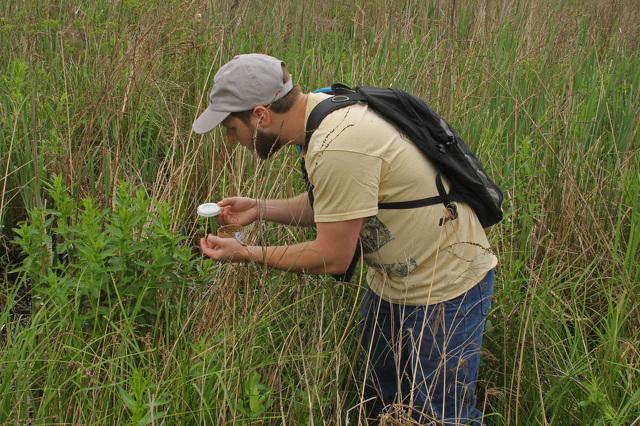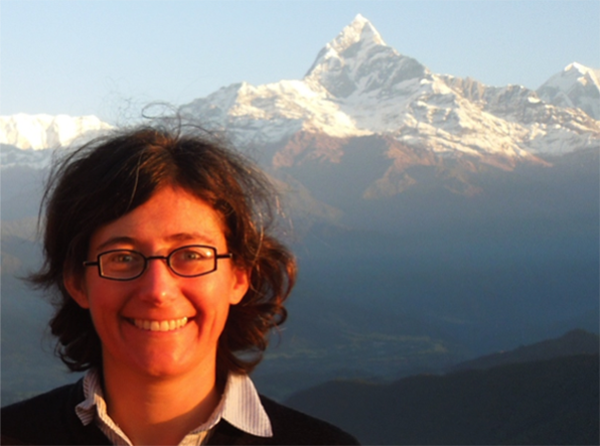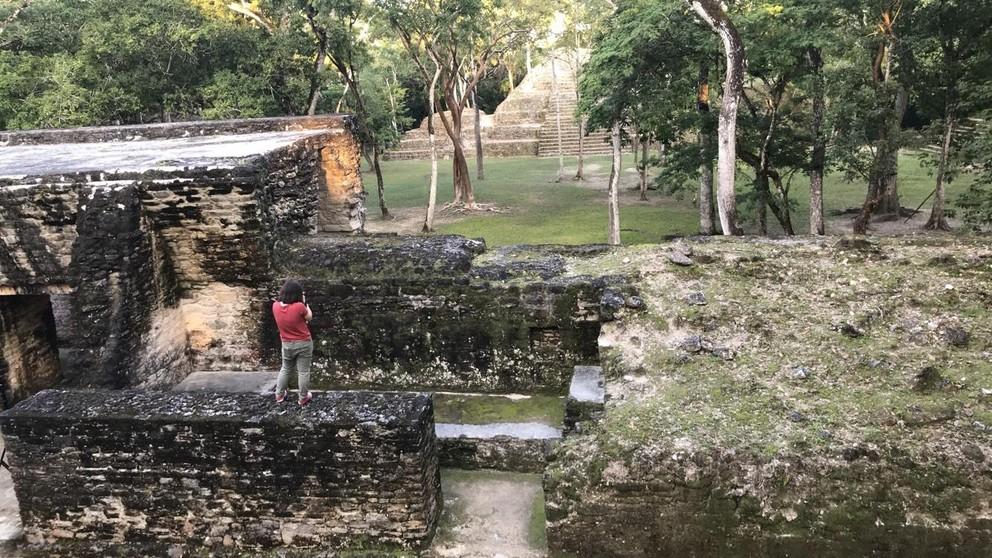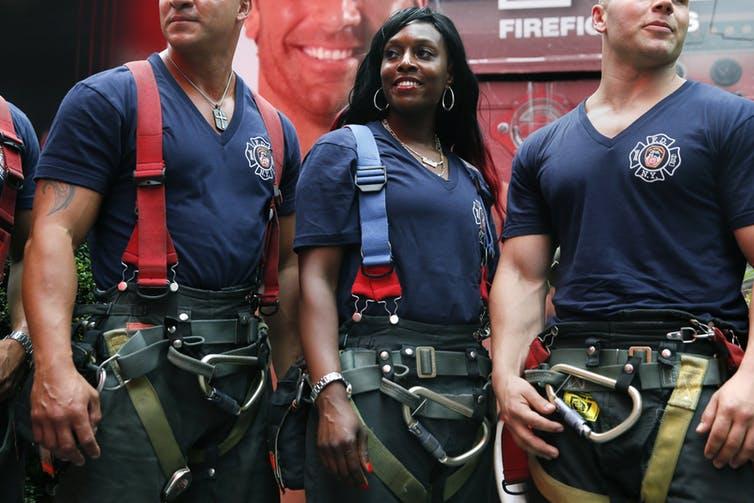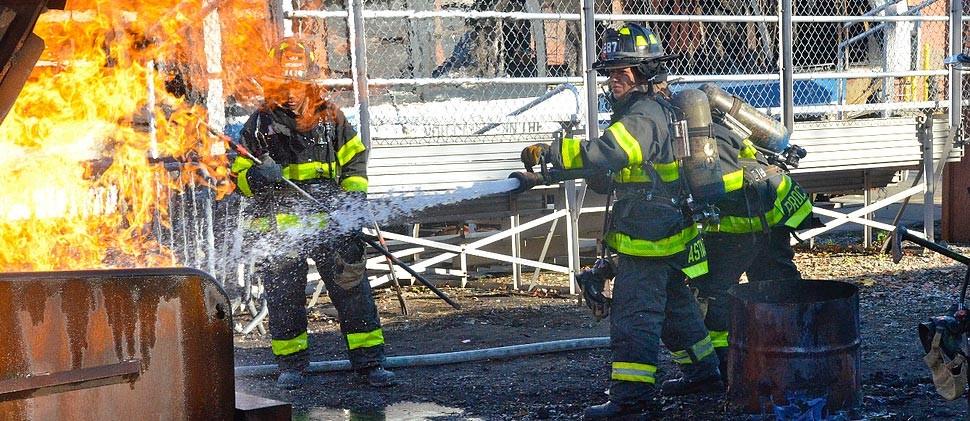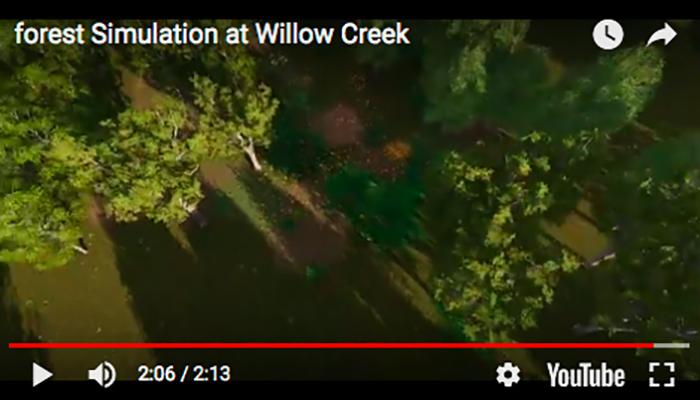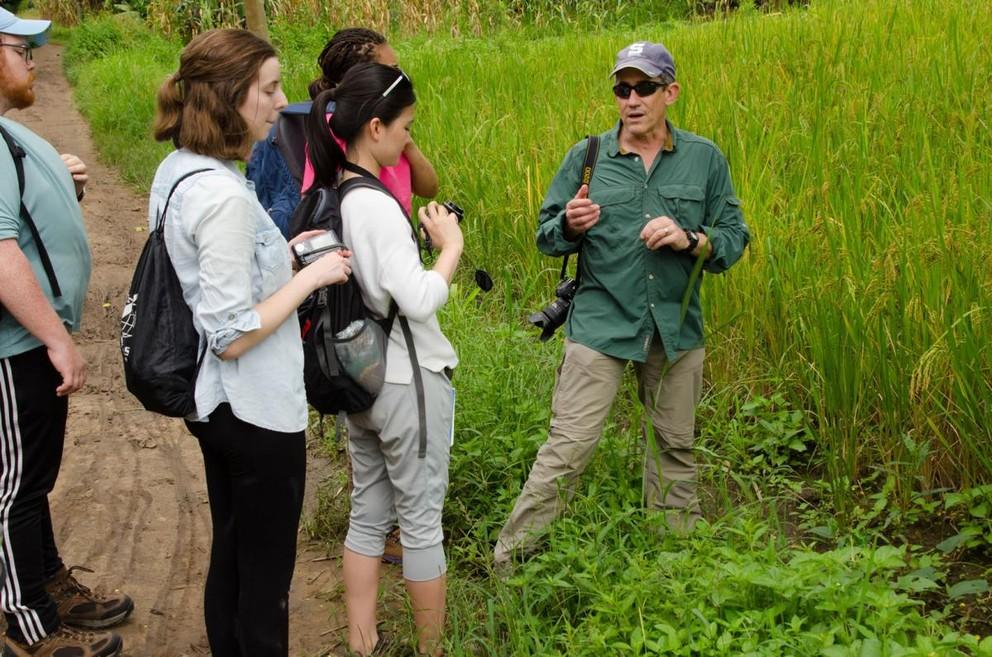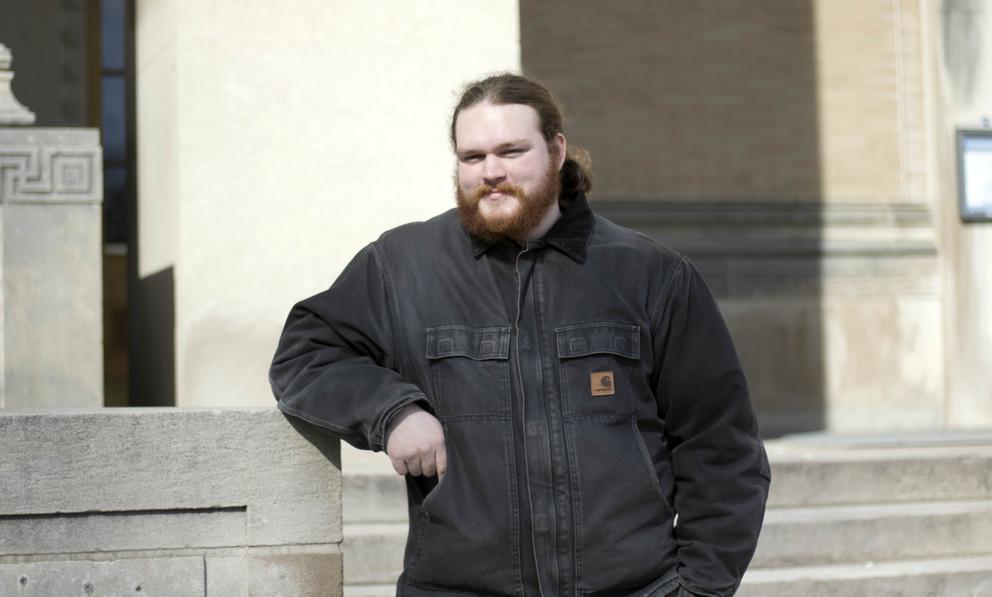A small group from Wildlife For Everyone gathered to see more than 600 alien Galerucella calmariensis beetles released late last month at the Julian Wetlands — a man-made marsh adjacent to Miles Hollow Road, north of Port Matilda.
Insects accidently imported from other countries have caused big problems. The list is long — emerald ash borer, gypsy moth, hemlock wooly adelgid and, now, the spotted lanternfly. However, this alien beetle has been introduced to solve a problem, not cause one.
Penn State graduate students Marie Louise Ryan, Johann Strube and Megan Griffin have been recognized with the 2018 Whiting Indigenous Knowledge Research Award to help fund their research pursuits. The award, open to all full-time Penn State undergraduate and graduate students, is funded by the Marjorie Grant Whiting Endowment for the Advancement of Indigenous Knowledge and supported by Penn State’s University Libraries and the Interinstitutional Center for Indigenous Knowledge (ICIK).
Ancient Mayan civilization in Central America, which collapsed around 1,000 years ago, is being brought to life in a new Penn State project. Two doctoral students in geography, Jiawei Huang and Arif Masrur, have recreated the Mayan ruins of Cahal Pech, in Belize, using virtual reality.
This project is through ChoroPhronensis, a research unit in Penn State’s Department of Geography founded by Alexander Klippel, professor of geography. Klippel's research focuses on immersive technologies and spatial information theory.
Five women graduated from New York City’s Fire Academy on April 18, bringing the number of women serving in the Fire Department of New York to 72 – the highest in its history.
The FDNY’s 2018 graduating class also includes the first son to follow his mother into the profession. She was one of the 41 women hired in 1982 after the department lost a gender discrimination lawsuit and was ordered to add qualified women to the force.
Despite these milestones, women still make up less than 1 percent of New York’s 11,000 firefighters. The city trails Minneapolis, San Francisco, Seattle and Miami, where in recent years fire squads have been more than 10 percent female. The national average hovers around 5 percent.
Approximately 10,300 women nationwide worked as full-time firefighters in 2016, according to the most recent data available from the Department of Labor. In 1983, there were just 1,700.
These women are on the front lines, fighting fires, helping victims of natural disasters and combating terrorism.
I interviewed over 100 female firefighters for an academic study of women in traditionally male industries. My research reveals how women are changing firehouse culture and transforming how Americans see heroism.
UNIVERSITY PARK, Pa. — There are a few statistics about women firefighters that stand out to Penn State researcher Lorraine Dowler.
Women account for about 7 percent of firefighters nationwide. Men and women firefighters have the same average age, but women are paid $10,000 less, on average, according to U.S. Census Bureau data. Even in the San Francisco Fire Department, which has made great strides toward equal representation, just 15 percent of firefighters are women. In the Fire Department of the City of New York (FDNY), that figure is less than 1 percent.
That’s why Dowler, an associate professor of geography; women, gender and sexuality studies; and international affairs, has spent the past decade interviewing women firefighters about their challenges and thinking about ways to improve opportunities for women.
More than 70 Penn Staters, including students (graduate and undergraduate), faculty, and staff are participating in the AAG annual meeting in New Orleans, April 9–14.
Among the highlights:
- Several online geospatial program MGIS students will be giving their capstone presentations during the meeting.
- The Penn State Geography Alumni and Friends reception is planned for Thursday, April 12, at 7:00 p.m. at Napolean House, New Orleans.
- The Supporting Women in Geography Panel, "Reflecting on the past and future of Supporting Women in Geography (SWIG), 6th Annual Panel" will take place, April 13 at 5:20 p.m.
Spreadsheet on Box with all Penn Staters and their sessions
https://psu.box.com/s/raq2tzrexje6j6njcnleuqski8duqepn
More AAG program information
http://annualmeeting.aag.org/schedule
Story from Portland State University News
What if you could see what a forest might look like 50 or 100 years from now? Imagine being able to see how a warming climate turned a dense forest into sparser woodlands.
Soon, there will be an app for that. With just a smartphone and a cardboard headset, users will be able to immerse themselves in a forest years into the future.
Portland State University researcher Melissa Lucash is part of a team that is working to visualize how a variety of factors – including climate change, wildfires, insect invasions and harvesting practices – can alter a forest and how that information can then be used by forest managers when making decisions.
UNIVERSITY PARK, Pa. — “Linguists reckon we lose a language every two to three weeks. Species extinction rates are about 1,000 times higher than they were before people showed up. None of that is good news," said Larry Gorenflo, professor of landscape architecture and geography at Penn State.
Gorenflo conducts research to understand how cultural and biological diversity co-occur in the hope of helping to conserve both. Gorenflo also holds the Eleanor R. Stuckeman (ERS) Chair in Design which provides him with support to further his ongoing inquiries. His research has demonstrated that places with a high number of species also feature high numbers of indigenous languages. He added, “Both are disappearing at alarming rates.”
UNIVERSITY PARK, Pa. — Open-source code developed by a Penn State graduate could improve weather forecasting and a range of other research endeavors that rely on pairing atmospheric models with satellite imagery.
Yanni Cao, who earned her master’s degree in geography in 2016, developed the code while a member of Penn State’s Geoinformatics and Earth Observation laboratory (GEOlab) as a way to fix errors created when satellite data is combined with the Weather Research and Forecasting (WRF) model. The work was done in collaboration with her adviser, Guido Cervone, head of GEOLab, associate professor of geoinformatics and associate director of the Institute for CyberScience, and the National Center for Atmospheric Research (NCAR).
Penn State Schreyer Scholar Doran Tucker has been interested in medieval armor since before he started college, so much so that he has made his own chain mail.
The Penn State geography and international politics major considered making some armor to fulfill a general education course requirement but decided to research and write about it instead.
Tucker's independent study paper on that topic has been accepted to both the 53rd International Congress on Medieval Studies at Western Michigan University this May and the International Medieval Congress at the University of Leeds, United Kingdom, in July.


